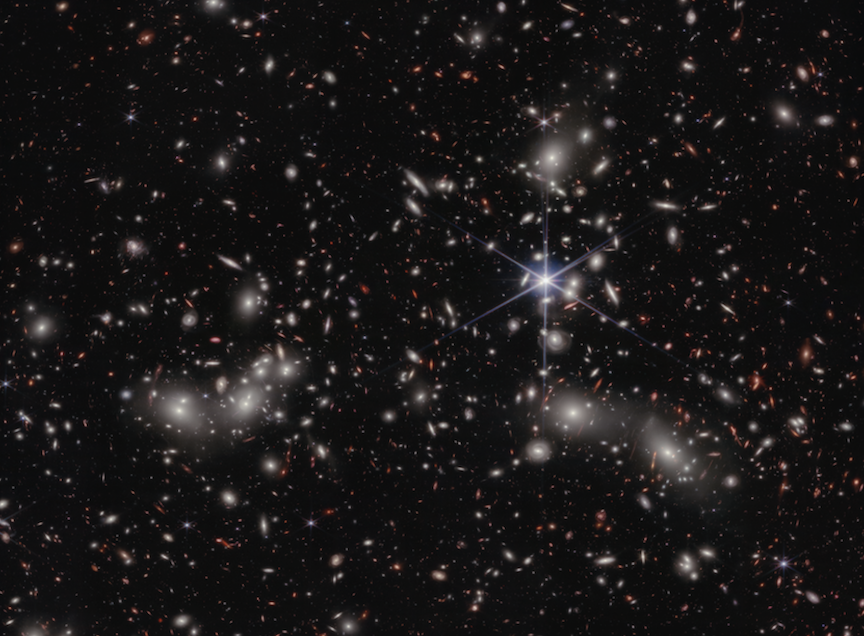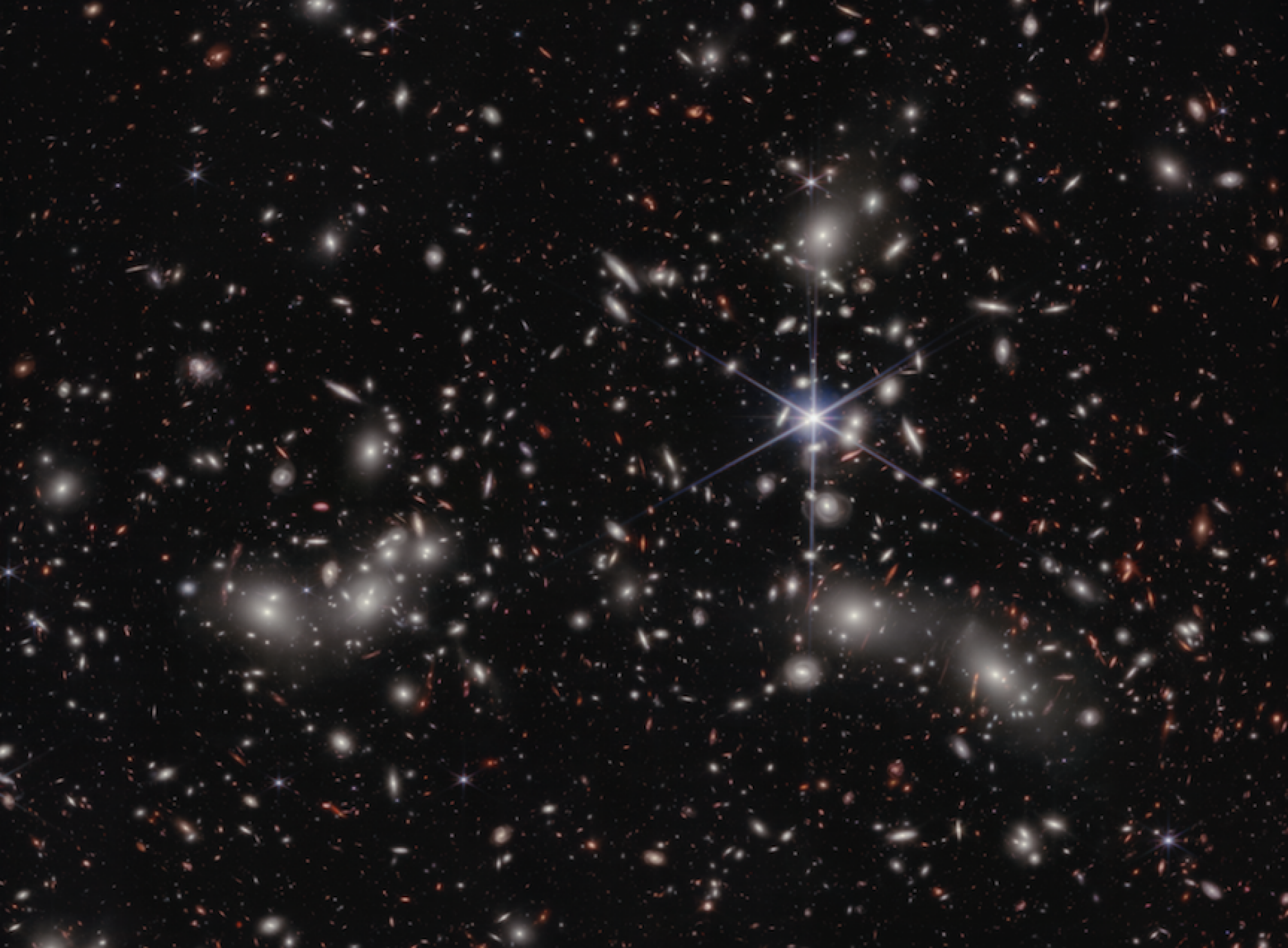
There are few things as astonishing as a deep-field view of the universe.
The powerful James Webb Space Telescope just snapped an unprecedented deep field view, which is an image comprising hours-long exposures of a section of the cosmos. It allows astronomers — and you — to view some of the farthest away and most ancient objects that we can possibly see today. Specifically, Webb stared deeply into Pandora’s Cluster, home to multiple clumps of galaxies, revealing a rich picture of diverse, distant galaxies, including spiraled shapes similar to our own Milky Way. There are some 50,000 objects in this space panorama.
In a way, a cosmic Pandora’s Box has been opened. (Without all the mythical evils and curses, I think.)
“The ancient myth of Pandora is about human curiosity and discoveries that delineate the past from the future, which I think is a fitting connection to the new realms of the universe Webb is opening up, including this deep-field image of Pandora’s Cluster,” astronomer Rachel Bezanson of the University of Pittsburgh in Pennsylvania said in a statement. Bezanson is a leader of a project called UNCOVER that is using Webb to take deep images of the universe, and in doing so, look back into deep, deep time.
Nearly all these objects are galaxies. The clusters are made up of the bright hazy white galaxies. The brilliant six-spiked light in the foreground is a star. And some extremely distant red dots of light could potentially be other things, like evidence of an early black hole.

Credit: NASA / ESA / CSA / Ivo Labbe (Swinburne) / Rachel Bezanson (University of Pittsburgh) // Image Processing: Alyssa Pagan (STScI)
Telescopes have captured impressive pictures of Pandora’s Box before, but not like this. Webb is designed to see infrared light — which is light that we can’t see — but because this light travels in longer wavelengths than visible light, it can essentially slip through the more dusty and gaseous clouds in the cosmos, revealing what’s beyond. Webb’s mirror is also 21 feet in diameter, over twice the size of the Hubble Space Telescope, meaning it can capture more light, which means more detail.
Yet it’s not just Webb’s extraordinary abilities that make this deep field view so astonishing. It’s the nature of Pandora’s Cluster. The clusters create a natural “gravitational lens,” magnifying the objects beyond. All these galaxies are enormously massive objects, as they contain hundreds of billions of stars, millions of black holes, and perhaps trillions of planets. The combined mass of these galaxies warps space, like a bowling ball sitting on a mattress.
Want more science and tech news delivered straight to your inbox? Sign up for Mashable’s Top Stories newsletter today.
This warped space essentially creates a “lens” that we look through. So the light from the galaxies behind this galactic cluster that we (or the Webb telescope) ultimately see is distorted. As the Space Telescope Science Institute, which runs the telescope, explains: “It’s like having a camera lens in between us and the more distant galaxies.” You can spy these lensed galaxies beyond the galactic clusters: Some of the reddish galaxies are stretched or distorted into arcs. These are some of the earliest galaxies that ever formed. It’s a sight made possible on your screen by the combined power of technological prowess and nature.
“My first reaction to the image was that it was so beautiful, it looked like a galaxy formation simulation.”
“Pandora’s Cluster, as imaged by Webb, shows us a stronger, wider, deeper, better lens than we have ever seen before,” Ivo Labbe, an astronomer at the Swinburne University of Technology in Australia who also helped capture the image, said in a statement. “My first reaction to the image was that it was so beautiful, it looked like a galaxy formation simulation. We had to remind ourselves that this was real data, and we are working in a new era of astronomy now.”
Stay tuned. Webb, a scientific collaboration between NASA, the ESA, and the Canadian Space Agency, hasn’t even been operating for a year. And it’s not just making discoveries about galaxies.
